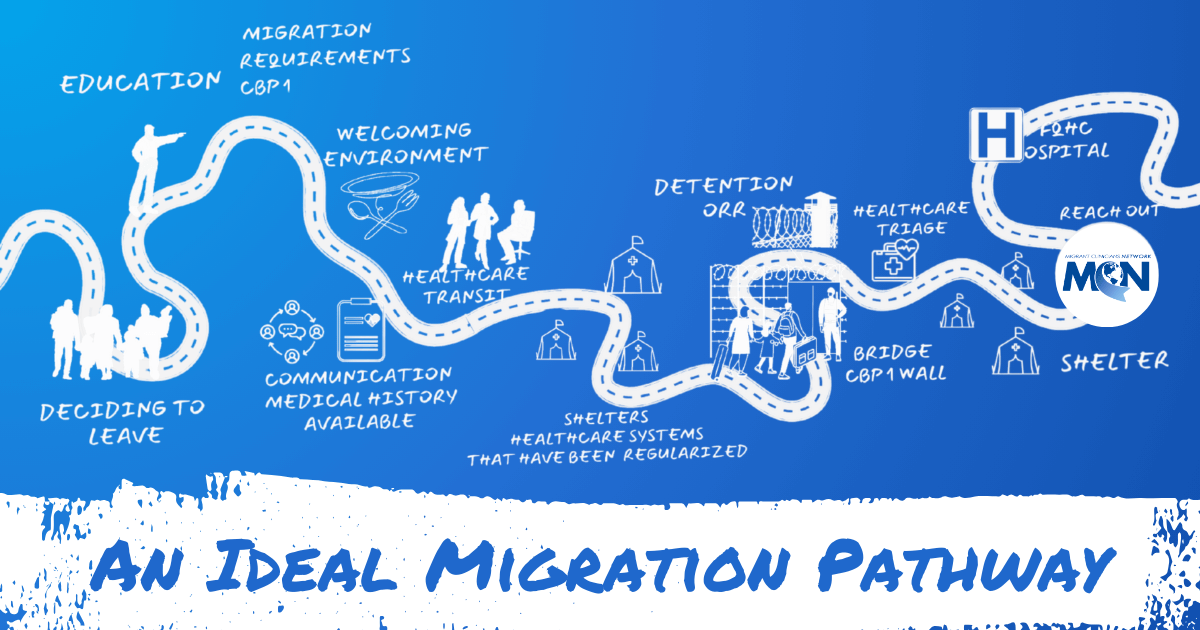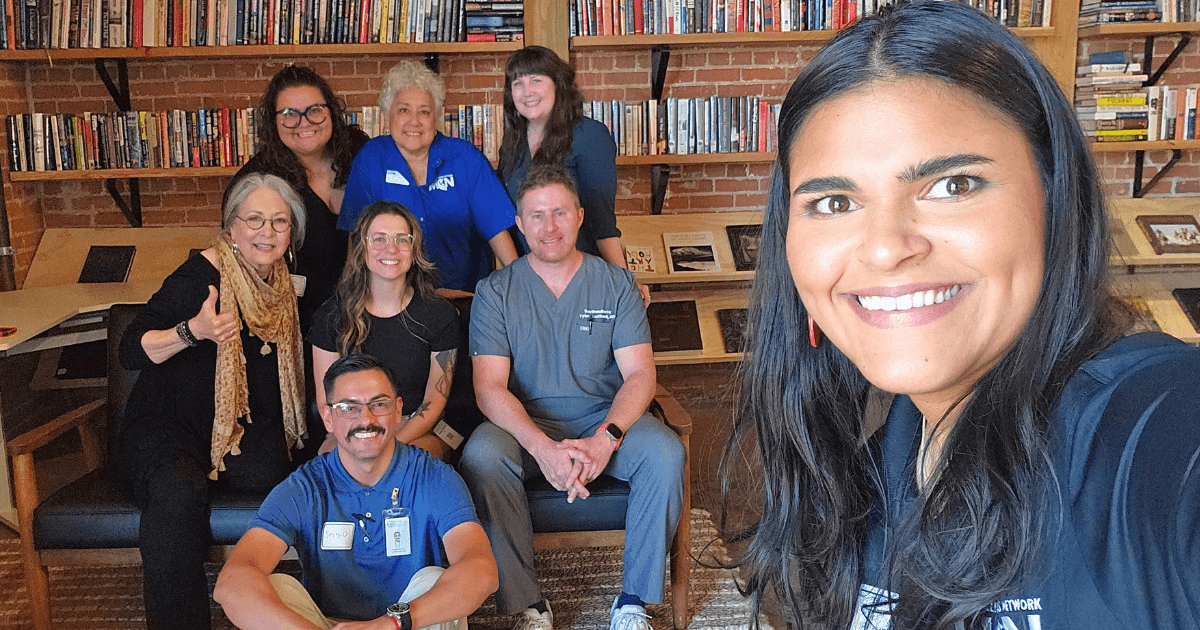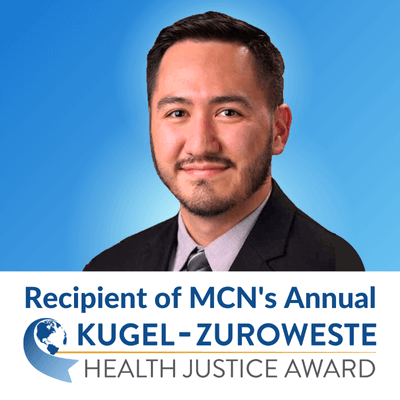Structural Change: Humanitarian Care Network Builds Comprehensive System to ID and Remove Migrant Health Inequities

A child with a seizure disorder who ran out of medication. A pregnant woman in her third trimester. A baby who is failing to thrive, with numerous undiagnosed conditions. Each of these people need urgent care and often cannot get it, because they are newly arrived asylum seekers.
Thousands of migrants who arrive each year at the US-Mexico border are granted asylum. While most are healthy, a small percentage of newly arrived asylum seekers have urgent health care needs. Some are pregnant, some sustained injuries while trekking to the border, others have pre-existing illnesses that may have been exacerbated by the journey and/or were previously undertreated or undiagnosed. Everyone in the United States – including those who are asking for asylum – has a right to access quality medical care, as the US has agreed to via the UN’s Universal Declaration of Human Rights and WHO human rights treaties. Yet, many people with urgent health care needs still struggle to access care.

Many individual interventions exist to address this gap in care – but a comprehensive, complete, and compassionate system for identification, referral, admission to treatment, and required care does not presently exist. Migrant Clinicians Network and its partners in the Humanitarian Care Network are seeking to change that.
The Humanitarian Care Network is a partnership of Migrant Clinicians Network; University of Texas, Rio Grande Valley School of Medicine; Texas Children’s Hospital/Baylor College of Medicine (THC/BCM) Research Institution; and Stanford School of Medicine. With critical funding from National Institutes of Health’s Community Partnerships to Advance Science for Society (ComPASS), the Humanitarian Care Network completed nine consultative group sessions across the entirety of the US Southern border to engage community members, local nonprofits, and service providers, to collectively develop a map of current systems, practices, and processes, and the populations that those systems serve.
Then, together, the groups envisioned a comprehensive, compassionate, and complete system for identification, referral, and entry into health care for pregnant women and critically ill children.

“This set of consultative sessions is the culmination of years of dreaming, plugging holes where we could, and working from our best instincts,” said Deliana Garcia, Chief Programs Officer of Emerging Issues and International Projects. “But the time, space, and funding to look at the system as a whole, at the structural components that comprise the system, are rare. NIH ComPASS has granted us an opportunity to be expansive in our thinking and strategic in our responses.”
The MCN team, aided by MCN’s Instructional Designer and Social Media Coordinator, Mario Puerta, designed an infographic to express the overarching themes from the nine consultative sessions on the current reality and the ideal migration pathway.
“Everyone working on the ground sees the holes, has ideas for improvement and a vision for the gold standard of health care for medically at-risk immigrants, but no one has systematically asked them to envision the process from start to finish,” said Garcia. “Collectively, we can affect the current approach and design a system that is complete, compassionate, and comprehensive.”
Next, Humanitarian Care Network will speak with previous users – meaning, asylum seekers who have utilized health services and programs designed to assist them – as well as those who completed their migration without the benefit of assistance to see what they think of the proposed design: Would this envisioned comprehensive system have helped them? Is something missing?

“It is gratifying to engage in work that I know will long exceed my presence,” Garcia concluded. “We are creating the future.”
|
You can learn more about the project:
|
- Log in to post comments





